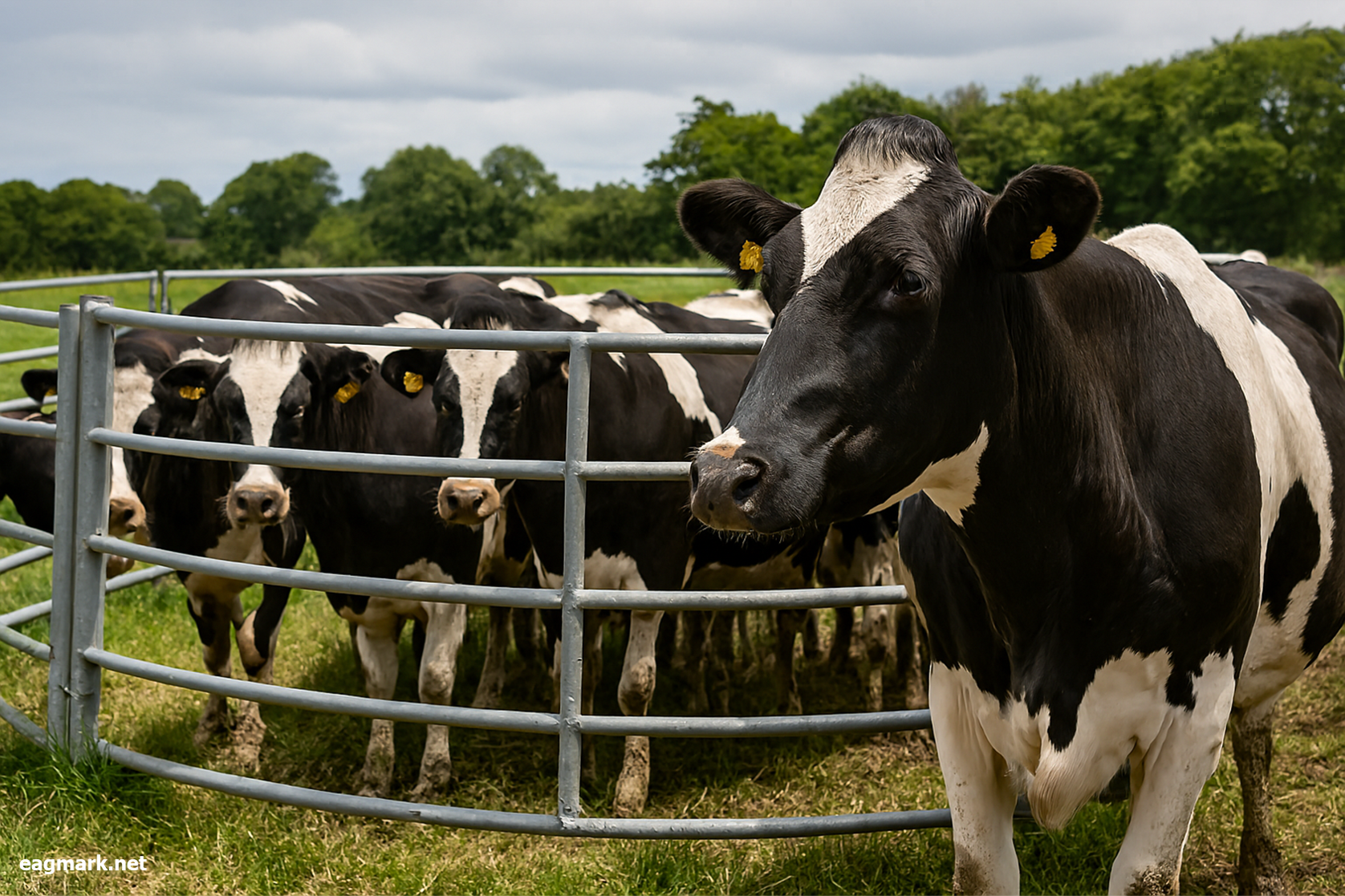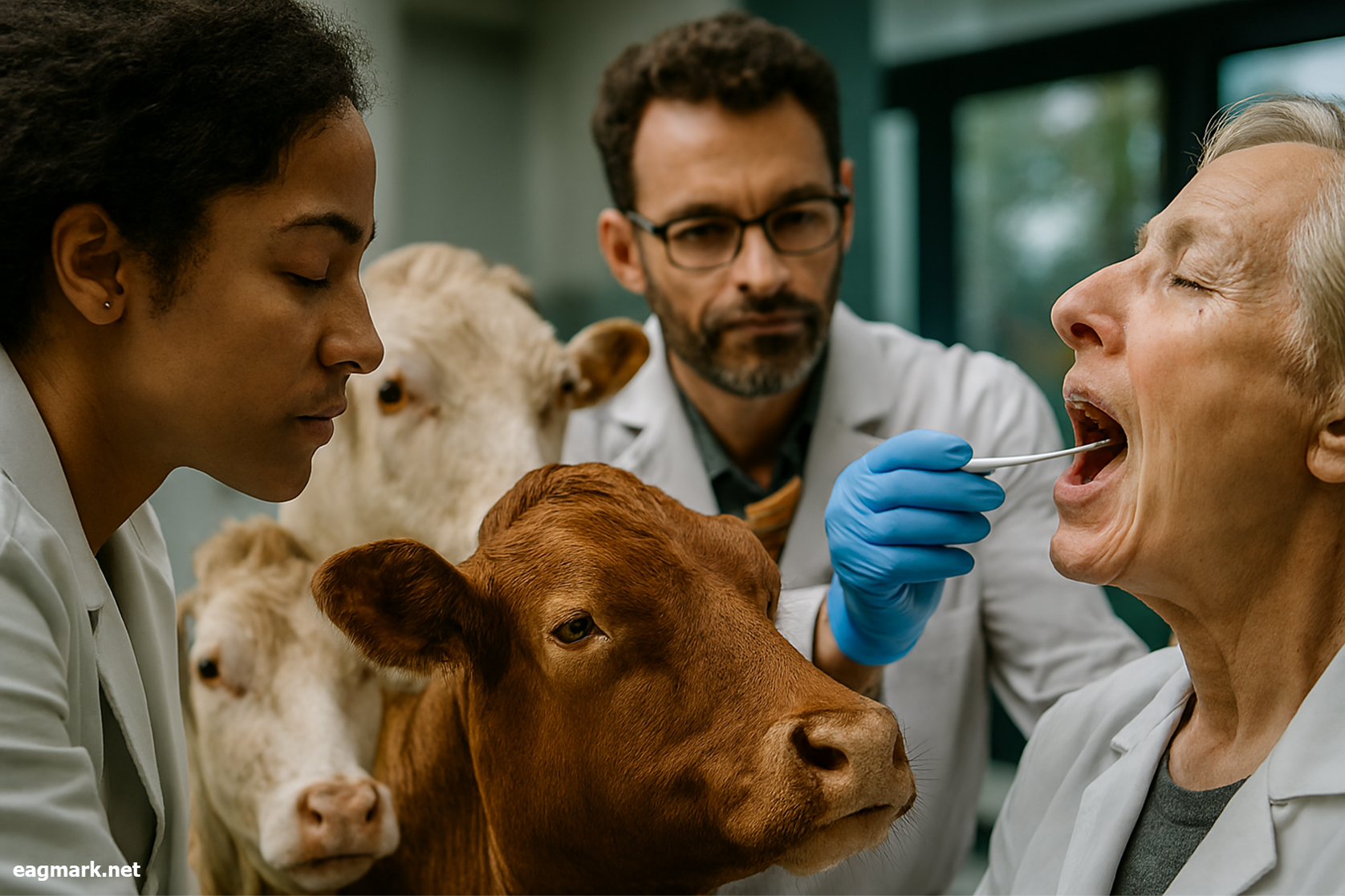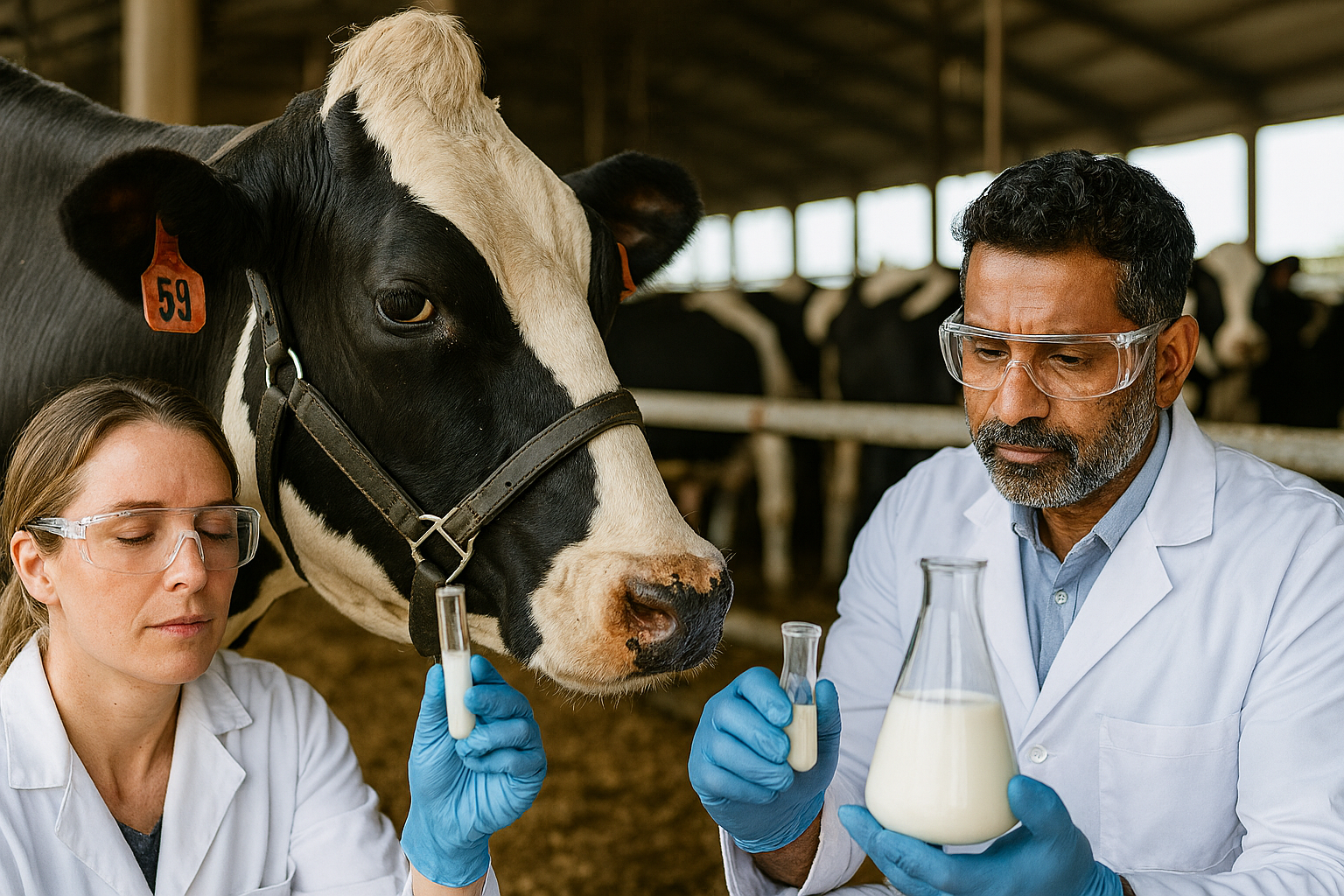
The UK's decades-long battle against bovine tuberculosis moved into a critical new phase today with the launch of Phase 3 field trials for a cattle vaccine and accompanying diagnostic test.
The UK’s Animal and Plant Health Agency (APHA) announced that at least 750 animals across 10 commercial farms in England's low-risk area and Wales' low TB area will participate in trials scheduled for completion in 2026.
The trials will test the cattle BCG vaccine alongside a companion diagnostic skin test known as DIVA (Differentiating Infected from Vaccinated Animals), which is essential for distinguishing between vaccinated cattle and those carrying active infection.
"The first two phases of the field trials have successfully demonstrated that the vaccine and skin test are safe to use," said Dr Camille Szmaragd Harrison, APHA's lead TB scientist. "This third phase has been designed to provide additional information to guide how they can be deployed most effectively to support England and Wales eradication strategies."
The Scale of the Problem
Bovine TB remains Britain's most costly and persistent livestock disease. England alone spends approximately £100 million annually on TB control, with the farming industry bearing an additional £75 million in costs, according to recent government figures.
The human toll is equally significant. In 2023-24, over 60,000 TB-infected cattle were slaughtered in England and Wales. For farmers, a TB breakdown can mean years of restrictions, lost income, and considerable stress. Recent research has documented the substantial mental health impact on farming families dealing with the disease.
The frequency of cattle movements in England - between 1.7 and 2.0 million annually, excluding movements to slaughter - creates ongoing transmission risks despite current control measures.
A 25-Year Strategy at the Halfway Point
The government's 25-year plan to achieve officially TB-free status for England by 2038 was announced in 2014. Next year marks the halfway point.
Whilst herd breakdowns have declined since 2017, particularly in the High-Risk Area, a recent independent review suggests "only a small chance" of meeting the 2038 target without significantly increased urgency and resources.
The review, an update to the 2018 Godfray Report commissioned by the previous government, calls for "a mindset of defeating rather than managing the disease."
How the Vaccine Works
The BCG vaccine available for cattle provides partial but not complete protection against bovine TB. Field trials have shown vaccinated cattle are considerably less likely to become infected when exposed to the disease.
A particularly significant study in Ethiopia found that when accounting for both direct protection and reduced transmission, BCG vaccination achieved 89% total efficacy in preventing TB spread within fully vaccinated herds.
However, a critical challenge has been that vaccinated cattle test positive on standard tuberculin skin tests used for surveillance. This is where the DIVA test becomes essential.
The DIVA skin test (DST-F) uses three proteins absent from the BCG vaccine strain but present in wild M. bovis strains. Early studies show high specificity - only 1 in 140 cattle were incorrectly identified as infected. Sensitivity studies in naturally infected cattle are ongoing.
The Path to Deployment
According to APHA's deployment pathway, a dossier for marketing authorization of the BCG vaccine is expected to be submitted shortly, with approval anticipated within 18 months. The DST-F test dossier is planned for mid-2027, with approval following after a further 18 months.
If all proceeds to schedule, vaccine deployment could begin in 2029 - nine years before the 2038 eradication deadline.
UK Chief Veterinary Officer Christine Middlemiss stated: "The UK is at the forefront of global efforts to develop effective TB cattle vaccines, and we are moving ever closer to having an operable vaccine. That we are reaching this stage is testament to our world-leading scientists, but also to the vets and farmers that have taken part in this trial and previous trials."
Wales' Chief Veterinary Officer Richard Irvine added that the trials "mark another important step towards having a deployable cattle TB vaccine and to meet the target of a TB-free Wales by 2041."
Challenges Ahead
Deploying vaccination across England's High Risk and Edge Areas would represent one of the largest livestock disease interventions the country has ever attempted.
Major challenges include ensuring reliable vaccine supply, mobilizing sufficient trained vaccinators, developing IT systems to track vaccinated cattle, and securing international trade recognition for the vaccine and DIVA test combination.
The review notes that regulatory approval processes, whilst necessarily rigorous, could potentially be accelerated - pointing to lessons from Covid-19 vaccine development - given that BCG has been used since 1911 and the technologies are well understood.
Cost remains a significant consideration. Badger vaccination programmes have highlighted the expense and logistical difficulties of large-scale wildlife vaccination. Similar challenges will apply to cattle, though economies of scale should help once deployment reaches sufficient size.
A Multi-Faceted Approach
Vaccination alone will not achieve eradication. The updated review emphasizes the need for improvements across all aspects of TB control:
Testing and surveillance: More sensitive tests such as the interferon gamma blood test can detect infected animals missed by standard skin tests. The review recommends mandatory use of interferon gamma testing in all breakdown herds.
Cattle movements: Whole genome sequencing has increasingly revealed that cattle movements seed new outbreaks. The review suggests more stringent pre- and post-movement testing, particularly for cattle entering low-risk areas.
On-farm biosecurity: Despite available guidance, uptake of relatively simple and inexpensive biosecurity measures remains disappointingly low. Disease Report Forms show 98% of breakdown herds allowed badgers to access cattle housing.
Wildlife management: With badger culling to end before 2029, badger vaccination will need to be scaled up considerably. Evidence shows vaccination can control TB in badger populations, though this may take over a decade to achieve using current approaches.
Looking Ahead
The Phase 3 trials represent tangible progress in what the review describes as "one of the greatest factors affecting the livelihoods of numerous farmers" in affected areas.
However, achieving eradication by 2038 will require what the review terms "a step change in urgency" across government, industry and all stakeholders. It calls for greater investment now to save money in the future, noting that "Defra has struggled to quantify and monetize the benefits from investment to strengthen resilience to animal diseases."
The trials will generate crucial real-world data on how effectively vaccination and the DIVA test perform under commercial farming conditions. If successful, they offer hope that Britain can finally move towards eradicating a disease that has afflicted its cattle herds for far too long.
Results from the Phase 3 trials are expected by the end of 2026, with regulatory submissions to follow. For the thousands of farming families dealing with TB restrictions, and for the cattle themselves, progress cannot come soon enough.


